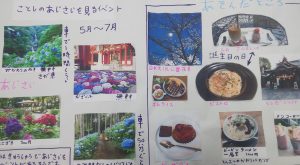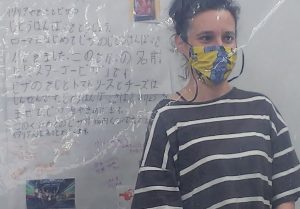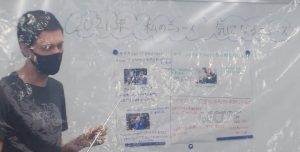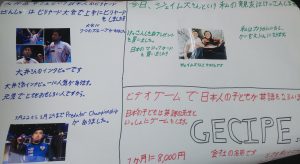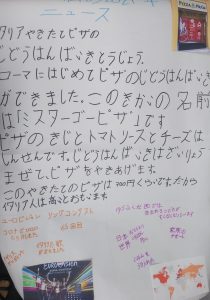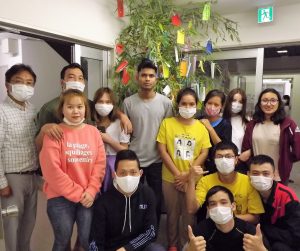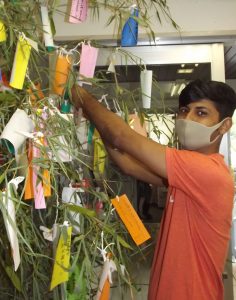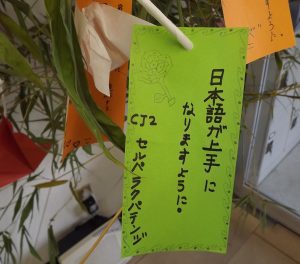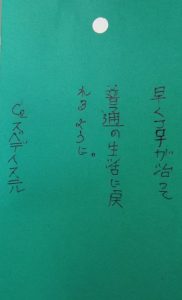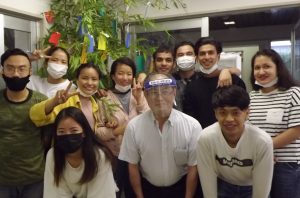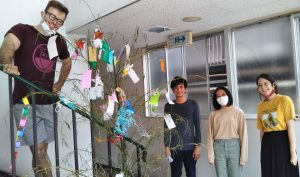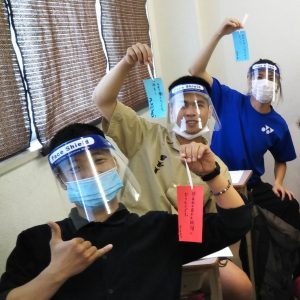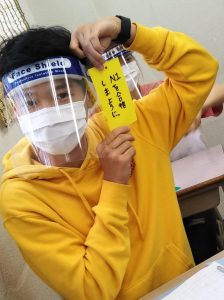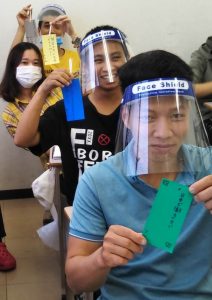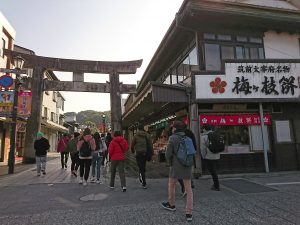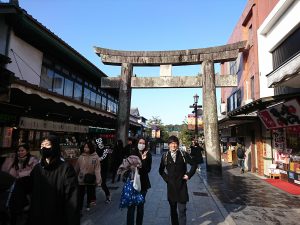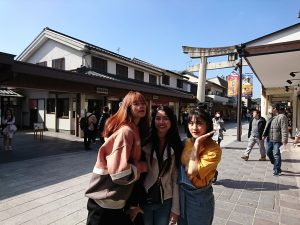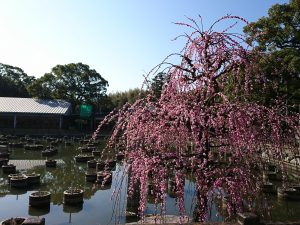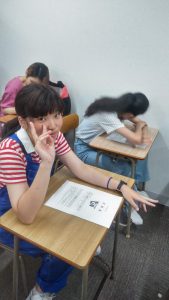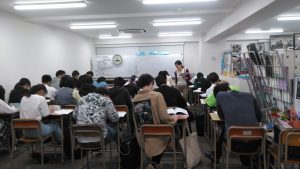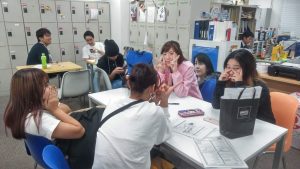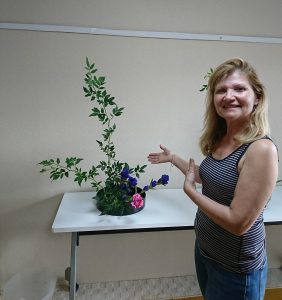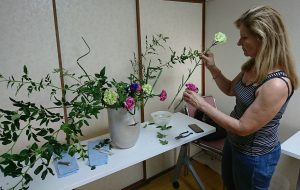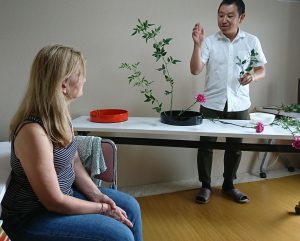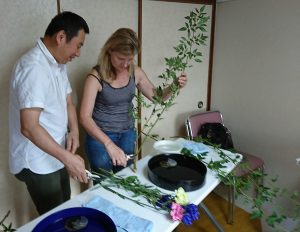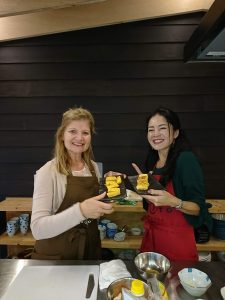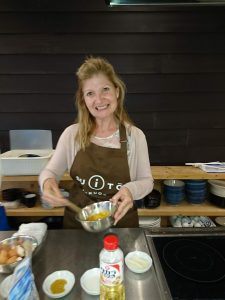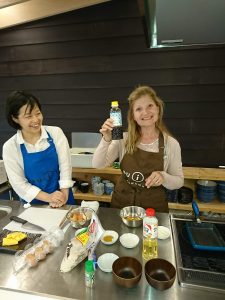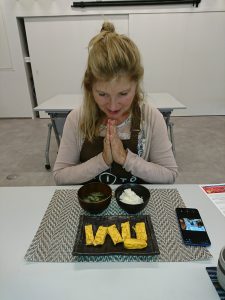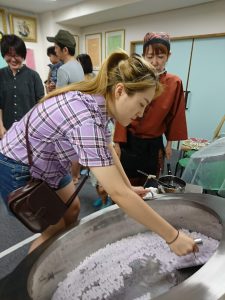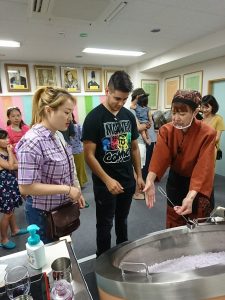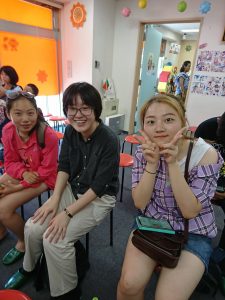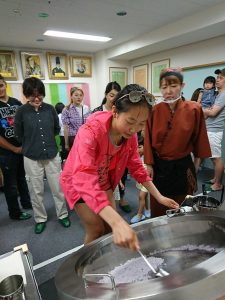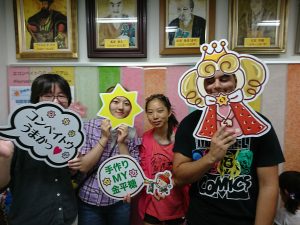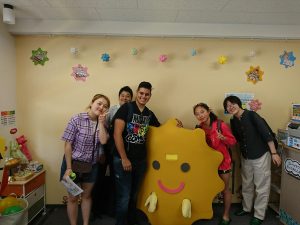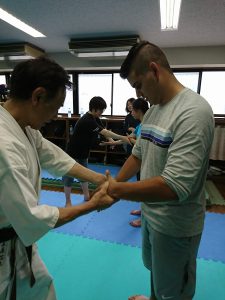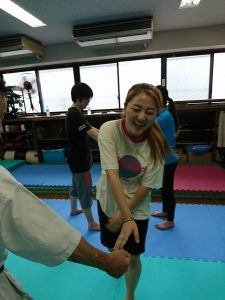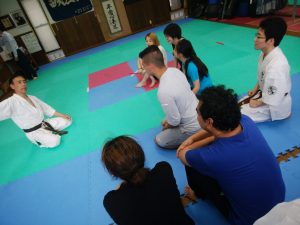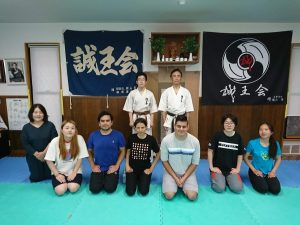Let you know how to celebrate our Japanese-style new year for you!
Let’s try to read what they are!
① ねんがじょう 年賀状 Season’s greeting card for new year.
Here is a Japanese style New year’s card, called 年賀状(Nengajo)
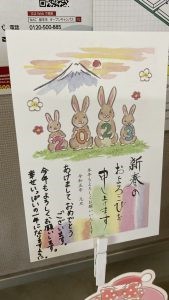
Amazing handmade by NILS staff members. What a lovely card♡
We usually use postcards as greeting cards, you can buy one at post offices or even convenience stores.
Make it colorful!
We send it to our family and friends.
Guess, how many cards I wrote this year?
Hehehe, One hundred!
Yeah, I totally spent my days writing cards,,, hoo.
Are you saying, Why don’t you use copy machine??
Never.

② えと 干支 The eto are zodiacal animals that form a 12-year cycle. They are from Chinese calendar.
The rabbit is called うさぎ in Japanese.
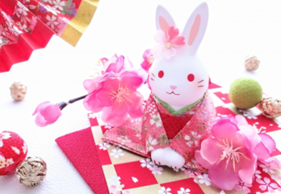
The symbol for 2023 is Rabbit!
Do you know what animals we have in Chinese calendar?
Name them and comment, please.
The most famous of Rabbit in Japan nowadays is・・・
You know,MA〇ZE〇sisters. Maybe writing ANIME characters in your card would be a good idea.
Anyway, do anyone know why those animals are symbols for the new year?
③ かがみもち It’s Japanese rice cake, a decoration for new year.
かがみもち(kagami-mochi)
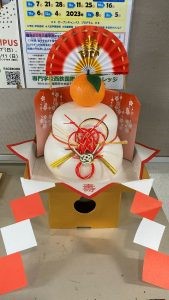
WHAT is this?
It is funny we stick small-sized hand fan and orange on the top of MOCHI.
Seems god is coming, yeah we decollate it for new year and welcome good fortune. We NEED it!
You can’t believe these are traditionally handmade. I remember my grandmother was making it every winter.
But now, you can get full-customed new year decorations at stores
Do you have this kind of tradition in your country?
④ しめなわ Ornamaent
しめ縄飾り(Shimenawa-kazari)
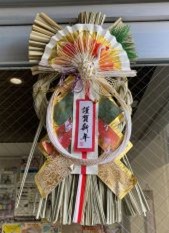
Made with leaves, it’s a kind of Christmas ornament, but it’s so humble there are not so many colors on it. We decorate it outside houses. You will see them even on cars!!lol
Some people decorate it on cars. Why?
Because wishing their family members and them safe year!
⑤ おせち Osechi
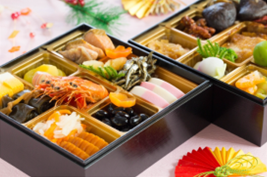
A lot of food is packed in a multi-tiered box like a bento-bako and eaten with the family on New Year’s Day (January 1 to 3).
It is said that the reason for making osechi is to have mothers free from housework.
We wish you a year filled with peace, good health, and lots of happiness!
We would like to share our ideas with you. Let’s talk about cultural differences.
Comment and share our blogs, thank you!
We will update our blog, Face book, and Instagram soon.
↓↓Please click here for more information and new update!↓↓
https://www.nilsjapan.com/programs/






